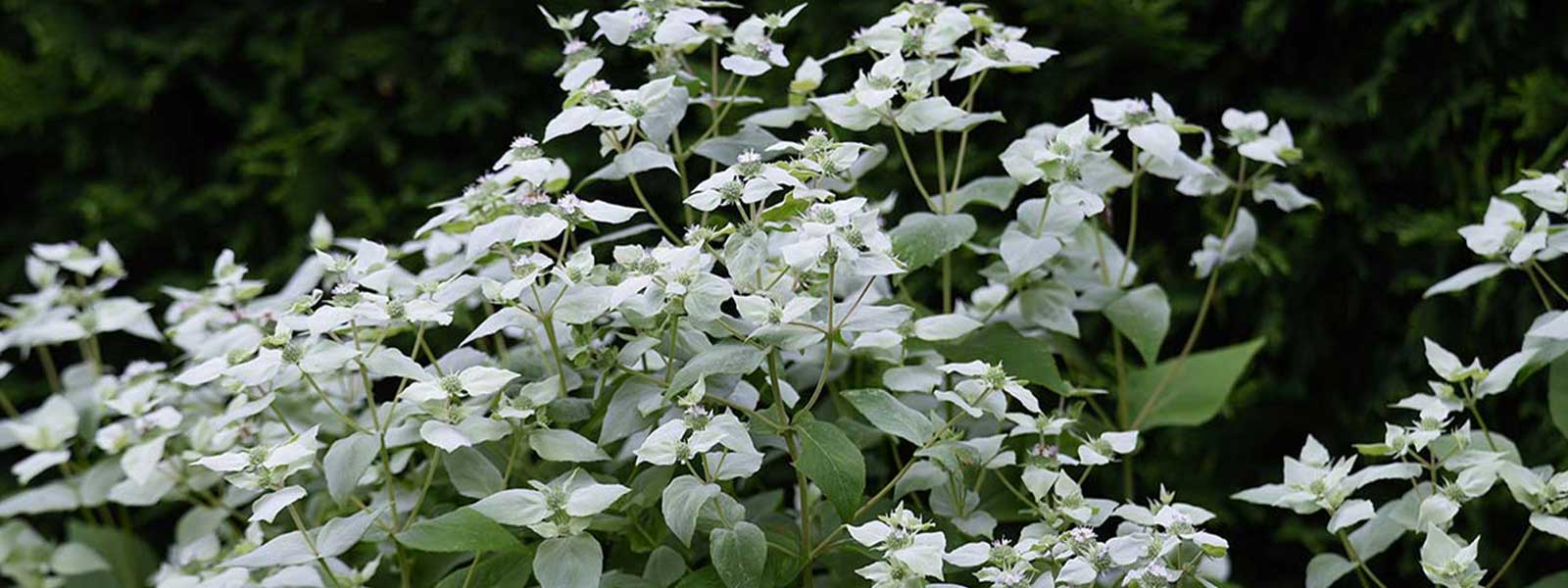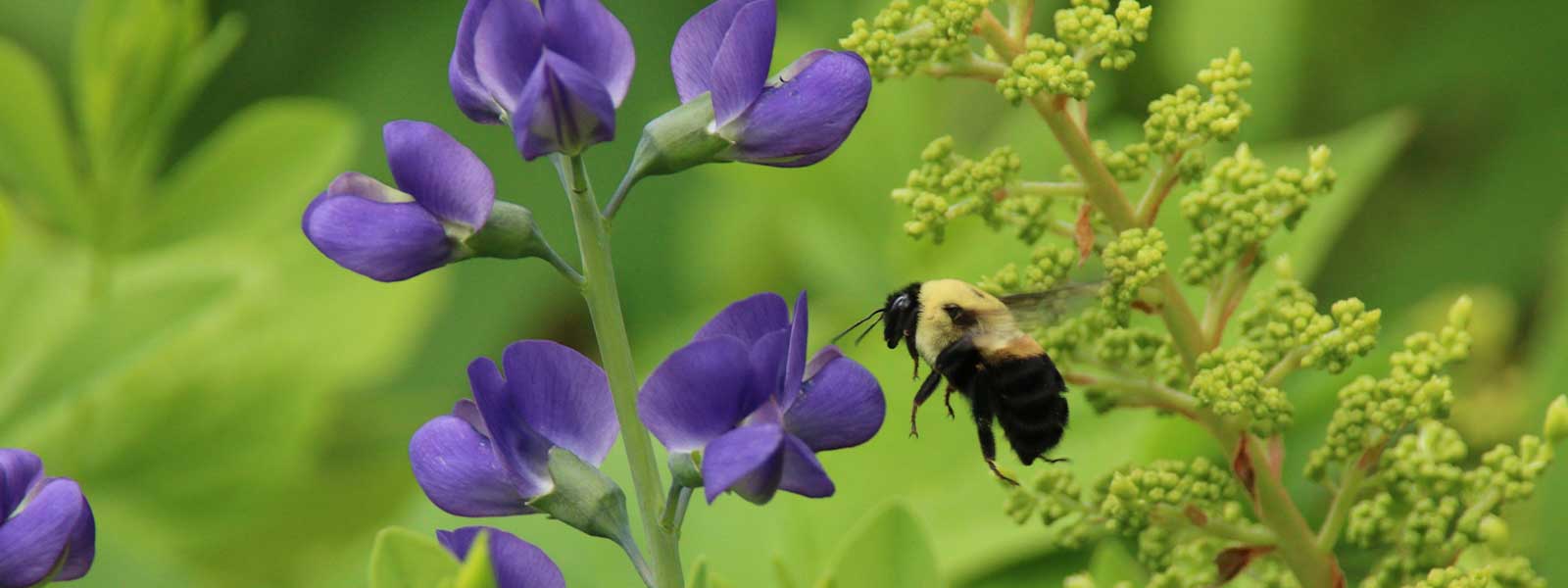Fall ’25 Bare-Roots – Order Now
Fall ’25 Bare-Roots – Order Now
|

Pycnanthemum muticum
Mountain mint, specifically short-toothed mountain mint, is one of the best plants for native pollinators. An incredible diversity and abundance of bees, flies, beetles, and butterflies visit our mountain mint patch on the farm. It also has the longest bloom time, and it attracts the greatest number of species of insects. In terms of feeding pollinators, there is no competition. Its leaves have an attractive blue-green hue, its spearmint scent is divine, and it doesn’t spread nearly as aggressively as most mints. Add mountain mint to your garden and landscape and the insects will thank you.

Monarda fistulosa
A plant that lives up to its name – native bees, butterflies, and hummingbirds flock to bee balm’s showy lavender flowers. We also observe many birds resting on the stalks and eating the seeds. It is easy to establish by seed or with bare root plugs, and is able to spread quickly through its rhizomatous roots, making it an excellent choice for meadow plantings. With its long bloom time, it continues to host bees, birds and other pollinators all summer long.

Echinacea purpurea
Echinacea, also known as purple coneflower, is beautiful, low-maintenance, and adaptable to a variety of soils and habitats. The contrast between its deep purple petals and red orange cones, and its long bloom duration makes it a smart addition to any garden. It attracts a plethora of native pollinators, including monarch butterflies that feed on its nectar. Echinacea is also well known for its immune-boosting properties, making it an essential addition to your garden apothecary.

Helianthus maximiliani
Maximilian sunflower, a resilient and adaptive plant, attracts bees, butterflies, and moths in large quantities, including the Silvery and Gorgone Checkerspots. It is easy to establish and spreads through its rhizomes, which are edible, much like Jerusalem artichokes. The oil-rich seeds also feed songbirds like goldfinches, which perch on the plant’s sturdy stalks as they feast on the seeds. Create an abundant songbird refuge with Maximilian sunflower.

Baptisia australis
Blue Wild Indigo is not only beautiful, but also benefits your soil by pulling nitrogen from the air. Its blue-green leaves grow up quickly in the spring before sending out shoots of deep purple pea-like flowers. Its roots grow deep and wide, which helps break compaction in the soil. Blue Wild Indigo blooms in the late spring, providing a food source for pollinators at a time when nectar can be scarce. The flowers are loved by many bees and butterflies, and birds eat the seeds throughout the winter. This makes Blue Wild Indigo a great choice for building healthy soils, supporting pollinators, and supporting surrounding plants and trees.